Introduction of the Children House and self-education structure
The children's house and self-education structure of the community of squatted Prosfigika is one of the many autonomous structures of the community, which has been reopened for almost two years in the fifth block in the neighbourhood of Prosfigika.
It was put together by individuals in solidarity with the community, based on our common understanding of self-organization and the importance of establishing together structures that respond directly to our material and psychological needs.
The necessity of reopening the structure, immediately found fertile ground and basis to consolidate the space as well as the first record of the community's needs that existed from the previous operation of the structure. The previous group of the structure had already recorded the first axes on which it had established its activity and on which we started to work.
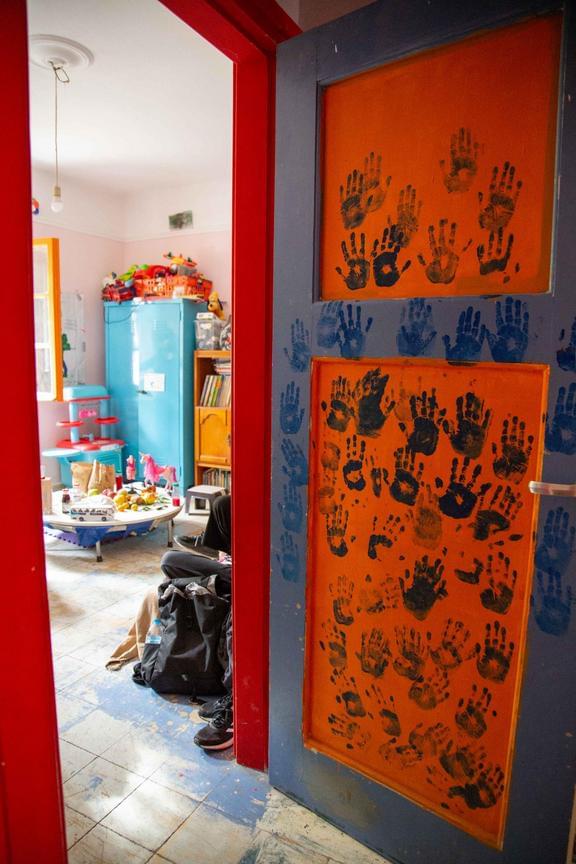
The children's structure is a living space with a creative and ethoplastic character. It is the place where children meet to play, socialize and share positive and negative thoughts and events, in order to find together mechanisms and tools to manage and perceive what is happening around us and what we would like to happen.
The children in the structure are children of migrants from different places, therefore each young person is accompanied by their own cultural idiom and experience. Our main concern, therefore, is how we co-exist and co-configure given this dynamic, with the aim of cultivating our common attitude and mindset, in order to organize ourselves and take ourselves into our own hands. Why we struggle and who and what we choose to be is directly reflected in the younger members of our community and that is why we use our structures to share ideas and shape our own culture together.
Within the last year, the children's structure has broadened its agenda, because in the previous year due to the new health treaty it had focused on supporting children in terms of the situation they were experiencing, perhaps more intensely than other people, as they were excluded from even the minimal tele-provision. Consequently, our productive time was spread over more hours of creative activities and additional lessons for the children.
Our goal is also to strengthen intra-community relations and the active participation of the community in the project. We suppose that the educational process and the self-education of young, and not only, community members concerns all people who constitute it, since it reflects the values we choose as our culture and our process of acculturation in them.
We want to share the reasons we set up a children structure within a community, as we consider the communities the more efficient way in which people can build a sustainable social life either reflexively to the existing system or by constructing its own structures from scratch.
The children's structure arose as a necessity of our community, it is created by the needs of children for the children themselves and functions as a diagnostic tool of the pathogenesis of potential relationships that develop between the parts of the community and are reflected upon its younger members.
These pathogens we try to approach them creatively as well as to smooth them out in the best way possible, in terms of benefits and community matters.
In the community, as we understand, the responsibility of children is shared by all members, so very often the children's structure has the function and responsibility to coordinate this process, ie observation of emerging situations, experimental intervention, where needed, and finally the consolidation of effective analytic tools.
These tools on the one hand strengthen our common understanding and perception of which behaviors we encourage and which we discourage as a community and on the other hand build one jointly agreed framework for action and self-organization.
As we said above, the structure was created and re-operated, based on our needs, without the intention of imposing or suggesting a specific theoretical model. Therefore, after two years of observation, direct practice, and reflection on it, our pedagogical approach emerges, which in the first place is child-centered. This means that pedagogy takes place through the establishment of genuine relationships, based on the belief that individuals develop into persons only through interpersonal relationships, which help them to understand themselves and the world better. For example, children are important to us, so we treat them in this way. We ask for their opinion on community issues as well as ideas about problems in our everyday life.
In this way:
1. In practice are being relativized, dynamic hierarchies such as the teacher-student dynamics. This brings us closer to a state of coexistence and co-construction.
2. Children feel creative and that they can intervene productively in any situation that does not please them.
The above characteristics contribute to the development of children's positive self-image and strengthen their self-esteem. Εmphasis on self-image and self-perception is reflexive on our part.
This is because we are trying to understand the age and cultural heterogeneity among children, as well as to oppose positive images to the intense personal experiences that each of them carries.
We then expand on the socio-centric dimension of our procedures, which unfolds on two levels, firstly the relationships that the child creates with the community and secondly the relationships that the child establishes in the wider urban net, i.e. in the society, having the community as a primary reference point.
Οur main concern is that children should be able to build around them equal and collective relationships in whatever group they are part of, as well as to acquire and exercise the attribute of self-regulation, with the goal of self-organization.
Finally, the aim is to learn to manage their multiple identities and the socio-political vicissitudes from which they emerge. As for example, to be aware of when the child comes to the children's structure in the context of supplementary lessons for school, when they come to socialize and play with others and when to cultivate their collective spirit as a member of the community (e.g. debrief by the children assembly of the children's structure of the demonstration of the Prosfigika against gentrification )
In the children's house we work with the following identities: first and foremost that of the migrant, which implies frequent and violent change of environment and status quo.
Second, that of the community member, which usually implies that the person from a very young age practices pluralism. All opinions, therefore, carry weight and percentage of truth, as opposed to the paradigm of nuclear family, where the child is mainly defined by the parents and/or close guardians.
Third, the member of the of society, which means that children participate and socialize within public educational institutions, but actually living on the fringes of this society, as they do not enjoy equal benefits with other members of society, many a time and sometimes not at all.
All these identities and many others act in parallel and often overlap. The children fluctuate between their multiple identities and often collide with them. Certainly, however, each one differs from person to person, as each individual is accompanied by their own personal journey, so the conflicts that each child may experience can create countless combinations when put in the context of their interaction with other individuals.
A first example of differentiating an identity by circumstance is the fact that a migrant may be class oppressed or not. It may be that in the same family half of the children were born in one country and half in another. Some might not have been born anywhere - in the eyes of the state - since they are not accompanied by birth certificate or citizenship. Another example, is the behavior of the person as a member of the community, as the reason for belonging to it varies in each individual since the motives and needs are differentiated. It can be by choice or lack of choice, a political stance, temporary or long-term. This is reflected upon the children who act and socialize accordingly, carrying the attitude they take on from their family towards the project.
In this way, the identity of the children as members of society is also differentiated, especially concerning their school identity, if it exists. Apart from children who do not have access to a public school, so they are socialized exclusively within the family and the community, there are also those who find it difficult to cope with school requirements, such as the use and understanding of language, speed of learning or because of serious obstacles to socialization. Finally, there are also those who cope more or less, motivated by personal and/or family motivation.
We consider identity confusion and conflict to be an integral part of modern reality. We, therefore, take a critical view of its origins, which we trace back to social alienation. The aim is to promote identitarian diversity as a condition that keeps the compositional process alive, an essential and fundamental objective of self-organization. Nevertheless, we insist on demonstrating this confusion that the system imposes on us with its own criteria and purposes, since it disconnects us from our primary concerns, which are our spiritual and physical freedom, our collectivization, creativity, and honest social relationships with ourselves and those around us.
So how do we handle alienation in pedagogical projects and in the self-education schemes in which we are involved? Our aspect is that we confront and we try to create positive counter-examples for all chapters in which we are alienated within that system.
We build on our own speed our own values, through which we reconstruct our social life on our own terms. Positive counter-examples are tools in the hands of children and other members of the community, which verify that taking responsibility for our own lives is possible and is an act with an impact outside of ourselves. In our confusion and alienation, we propose care and synthesis.
Care as for ourselves, redefining our relationship with the environment, our gender, our desires, nature, and any other direct relationship that exists in our lives. At the same time, caring for the other, human or non-human, giving space to encounter and looking forward to the synthesis of the self with the other. Finally, the synthesis of these two processes establishes solid relations of the individuals with the ideas and the materials that surround them.
In this direction, the main tool we use is self-regulation, with the immediate goal of self-organization with the best conditions possible.
The reason we choose to focus on the self-regulation of each child individually is to strengthen their mental structures and analytical tools, so that they can identify and point out their alienated identities as well as those of the people around them. They thus acquire direct connection to their choices and actions, therefore they can engage in a process of self-organization more consciously and from an earlier age and become aware through action what a self-organized community means, what our role is in it, how we claim our space materially and mentally, free from bourgeois ownership and privacy.
The use of self-regulation as a pedagogical tool of the community, contributes to a simplified interpretation of the tools of critique and and self-criticism for the needs of children, which tools encapsulate our understanding of our common life.

We believe that building such projects is possible, although they inevitably reflect elements of management of the enormous social reconfigurations that we are experiencing. However, our structures do not begin and end in their reflexive action.
We seek to work on them every day with aim and program. We aim to share with the children, through our pedagogical project, the model of life that we consider sustainable and to trust them to use these tools to collectivize and build lives while maintaining their mental and physical freedom in conjunction with the freedom of the environment, social and physical.
On the other hand, our goal is not to create complementary structures to the existing system, running behind its insufficiencies but to structure and replicate our own value system, looking towards the possibility of holistic coverage of all pedagogical needs within the community, with a prospect to the cultivation of the personality and talent of each child.
In our program is the constant feedback of our structures with the certainty at all times that we are at a common speed with our kids and grownups, both with those who are directly involved in our project, as well as those we share common ideas and goals with. Moreover, to engage together in common struggles that will open more paths of sharing experiences and shaping new common stories that transcend all kinds of borders and our place on the map.
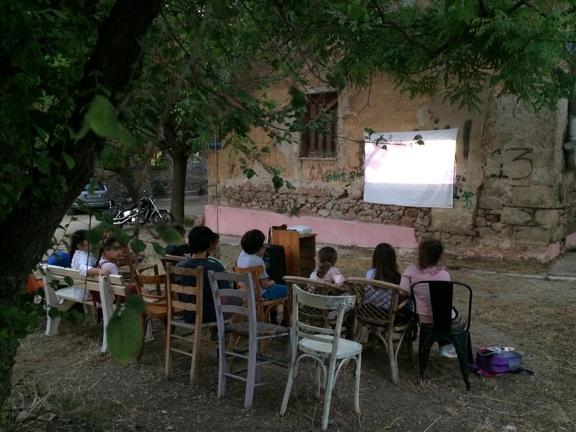
Introduction of our further structures
Besides the Children House and the self-education structure, we have different autonomous structures inside Community of Squatted Prosfygika.
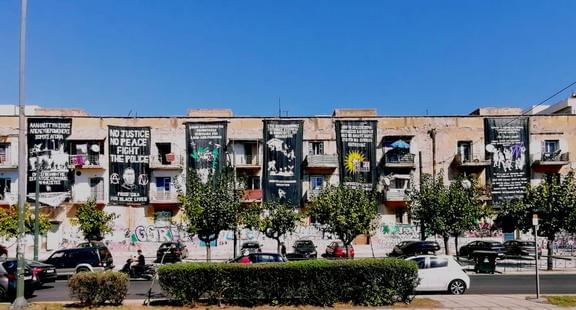
Some of them are:
"Womens Café"
The femininities of our community have an autonomous organization with their own procedures and spaces. Τheir targets are:
1. to fight patriarchy in the society, but also inside our neighbourhood
2. to educate the people of the cmmunity on the gender issue
3. to organize and support the femininities of the community
From the legal procedures - trials and documents - of the femininities to the street struggles and informative events, the Womens' Cafe requires economical support for all the kind of needs.
"The collective Bakery Structure"
The Collective Bakery structure is producing bread and lahmajun on a weekly basis for the community but also for other people, self-organized open markets and cooperative shops, in order to receive some minimum income. We are in a process of upgrading our bakery structure, by refurbishing the infrastructure and its equipment in order to increase our production and upgrade its functionality.
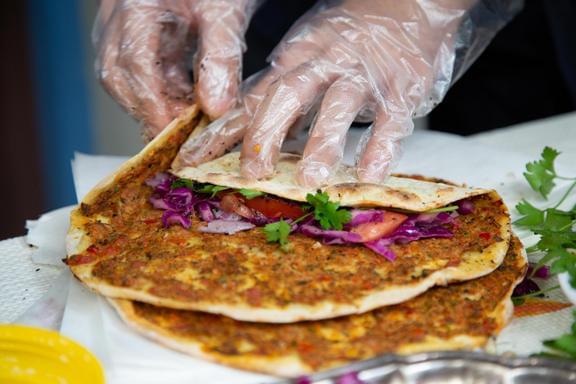
"The Social Center"
In the front block, located on Alexandra's avenue, our community operates a recently formed social center in order to increase visibility and accessibility to the public. Also, we are estimating that this building will be the first target of state-repression. The social center it’s an open structure in which groups, collectives and projects can co-organize with the community. At the same time, is hosting our assemblies, various events and the meetings of several collectives that we are cooperating such as a psychologist group known as Initiative Ψ and a group of architects. In the social center there is a public library structure with books from movements publishers. Our target is to gather books in several languages spoken in the neighborhood such as Arabic, Farsi, Bulgarian, Turkish among others and upgrade the facilities of the social center.
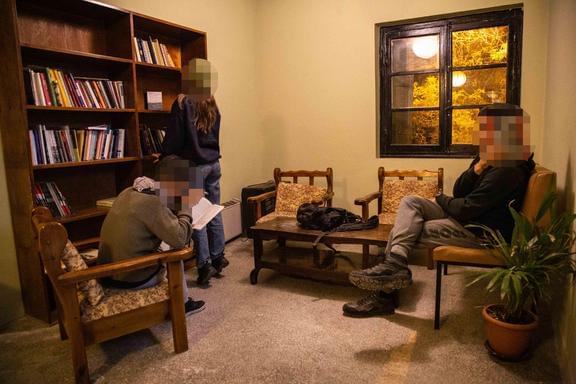
"Health Structure"
Solving health issues is a common task in our community, due to the multiple fragile social groups that inhabit within our neighborhood. For this reason, we are connected with social-medical centers. Beyond finding and gathering medicines and basic medical supplies to use and distribute for free, we are at the meantime trying to cover medical expenses. Our long term objective is to create our own health center and a structure to produce natural medicine.
"Skipping, Social Kitchen and the Food Logistic"
Our neighborhood is mainly composed by people who are not in condition to work, either because they are very old, either because they don’t have the right papers, so there is a high need for free food gain. This need is covered in several ways. Our central source is the free food given to us from the local street markets. Beyond the distribution to the inhabitants, a part of the food is used for the social kitchen which happens on a weekly basis. But this is not enough. The free market is providing to the community vegetables and fruits but the needs of the people are going much further. Products like oil, pasta, rice, legumes must be found in other ways, with the responsibility of the food logistic structure and of course any product resource or financial support are helpful.
"Communal Internet"
Access to internet is very important for our people in order to to get informed and use digital tools. Lately, we managed to establish internet in almost every building block of the community. Our target is every house to have internet access.
A description of the Community through the eyes of the childrens assembly
Do not be afraid, it does not bite!!!!
Living in a building that's ugly outside doesn't mean it's ugly inside. What makes a building beautiful inside is having people to share it with.
Growing up in a community makes you understand life better because you have faced difficulties. Some of the difficulties are the language and the way people think of you.
We take our position seriously, especially as we get older. Here we grow up faster than other children. For example, we take care of our homes and our people.
Not everyone has to be our family to take care of them. Here we are one big family.
When we are called to do a job, for example, translating into another language, we come because that is our way to contribute.
Here is a neighbourhood where we help each other, we all work together in groups, not like in other neighbourhoods where everyone works on their own house. We all live the good and the bad times together.
We all live the good times and the bad times together.
We all give money for chores, we all get together at assemblies and talk about what's going on in our neighborhood. Other neighborhoods don't do that. Here we all go out, we all talk and we're not locked in. In other neighborhoods they live in better houses than we do, but here we do things that other people don't. We all play together, watch movies, eat popcorn, build swings for free while the others give money for all of that. When we give money to the kiosk, we collect them to buy things we need.
Outside of our neighborhood there are people who have no food and no money and no home. When people ask for food themselves, the rich don't care that other people are hungry. If they come here, someone from our neighborhood will give them food and if we have we will give them a house and they will not have to give any money for it.
We do a lot of things for children here. In the children's house, for example ,we have a lot of toys that we share. We watch movies that we like a lot and we do lessons for school.
When a problem or fight arises from people outside the community, we call them to stop. If the problem is created by people who live here, then we try to solve it. So, we give a chance to someone who did something wrong. Our suggestion is to give another chance to someone who stole and only if he do it one more time, we kick them out of the neighbourhood. We also ask why he stole it and how he would feel if they had stolen something from him that he needed.
If someone attacks us we throw rocks and go to the rooftops.
We're happy here and we wouldn't change anything
The neighborhood bites when it has to and who it has to.
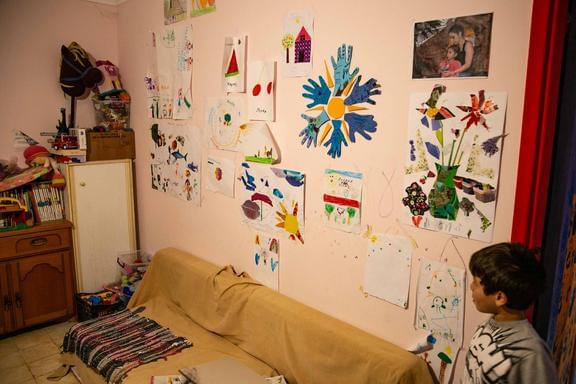
The call of the event
This period of time Childrens Structure works on the following event in the context of extroversion and self-defending our community, this is the reason why we call for financial support.
The structure of children house and self education of the Community of Squatted Prosfigika in Athens, Greece, is organizing an event in order to promote self education on the following concept:
HOW DO WE IMAGINE OUR FUTURE SOCIETIES AND WHY FORMING COMMUNITIES IS THE MOST EFFICIENT COUNTERPROPOSAL TO THE EXISTING SYSTEM?
This is a call towards collectives and individuals that work on the topics that we list bellow, to present workshops and positions on these topics. The presentations could be physical and held in our community, also be prerecorded in video or online, and for the workshops we have the ability to host, help and co-configure if needed. We are open to any questions that arise on practical and conceptual issues.
With this event, we would like to explore the mutual understanding of the vision towards which we work in our libertarian, horizontal, self-educative structures.
Many people, from collectives to individuals, prefer self-education as the most efficient way to own and share information. That mostly results from the vast majority of institutional reproduction, public and private, of the bourgeois class's rhetoric and political agenda.
The reason we insist on self-education is that we notice a systemic collapse transnationally, in every way possible. From nowadays power struggles, financial and energy crises and migration to the contemporary social dysphoria, the institutions that are in charge to distribute information globally, seem inefficient at the end of the day.
Our societies live under the input of events, transmitted in an aggressive way that obliges you to participate through reproducing (willingly or not) the information they imply.
For this reason, seems nearly impossible to synthesize a reality and perform it out of the worldview that these events suggest. From the beginning, the source, as well as the primary goal, the analytical context, and the final suggestion that this information implies, are all unclear elements. In our view, to synthesize reality, you need an immediate relation with its founding elements, such as the particular reality's history, location, how people meet their needs, how they contact interpersonal relations and how they relate to nature.
Furthermore, how do they describe and share these experiences with others. Moreover to synthesize a viable reality we need to adjust all these compositional elements to a state that is possible to overpass acting towards involuntary reproduction of the existing system.
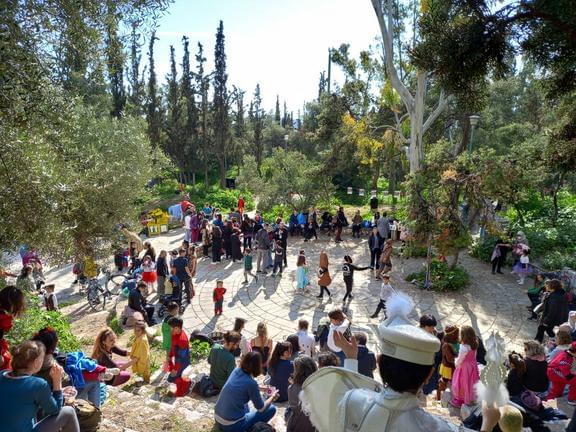
By the term existing system, we refer to a system that is closed and aims to reproduce itself in every way possible. In the current system, every kind of knowledge, information or skill is filtered as useful or not according to the needs of its reproduction. In the equation of oppression, the word " system " can vary according to the context but some immediate names for it would be the capital and its accumulators, patriarchy and every hierarchy that needs oppression and manipulation to exist as well as social alienation mechanisms that counter propose security as the road to a balanced ego. The majority of institutions are formed and are growing through this evaluation of sufficiency as well.
As result, every sector and aspect of visualization of a different way to build and perform our societies is dictated by these systematic commands. These lead back to the ultimate systemic collusion we described above. Why does even matter to us?
Because through this collapse we realize that despite the density it projects, in reality, this system is vague and unstable. We trace its instability to the alienated relations that are being reproduced in every level that constructs it.
Guided by the values of self-organization, horizontality, immediate relationships with humans, nonhumans and ideas, open distribution of information, and an equal division of labor, we insist on building autonomous structures. Structures that can enforce us towards a more sufficient synthesis of our reality. In our case, we speak from the starting point of a territorialized community of struggle towards the above. In a community of applied internationalism, in which many different backgrounds coexist in a common platform using anti-authoritarianism, anti-sexism and solidarity as our minimum of agreements, we work towards our sufficiency and continuation, both self–referentially and towards other communities that share the same values, in any state of development or form they might be. In our community information and self–education are highly valued commodities, since are fundamental elements of openness and communication, as well as our tools to coexist and understand each other better. Through these tools, we visualize our future and acculturate towards the values we decide on collectively.
Our self–education attempts elaborate in different forms and structures according to our needs. From learning our community's languages, to comprehending our understanding of patriarchy/authority and its influence on our actions, self-education is a part of our daily political routine.
We believe an efficient way to elaborate our practices is by sharing information with other collectives, that work on these topics. By communicating results derived from different locations on the map and various historical elements, we manage to recognize commonalities that are essential and fundamental.
In this thought process, we call collectives and individuals to share their experiences and ideas with us on the following topics, through which, we aim to form the vision of our communities by self–educating on them:
Communal sustainability, autonomy, interdependence and coverage of needs.
1. How can we establish autonomous and sustainable communities?
2. How can we distribute communal labor respecting individual abilities, while establishing the sustainability and coverage of needs?
3. How does the concept of self-sufficiency is translated in the context of a community as described above and which are its limits?
4. How can the interdependence of communities be perpetuated, in order to maintain the self-sufficiency and autonomy of each, without reproducing an outrageous division of labor?
5. How should we evaluate commercial activity such as collectives and shops?
6. How can we achieve self sufficiency and a stable internal economy independently of the state?
7. How do we include the concept of development and progress in the concept of communal stability and harmony?
8. Regarding food, let's discuss tools, methods and challenges of collection, distribution and maintenance.
Gender coexistence, multiple identities and work in unison through self-education.
1. How can we achieve non-patriarchal, equal and justified conscious participation in communal labor?
2. How can we include all gender identities and the lack thereof in community self- defense?
3. What tools do we have to deal with sexism, individualism, authoritarian behaviors and other characteristics that don't contribute to viable communities?
4. How do we value family in order not to contradict collective responsibility? Is it possible to raise children communally?
5. What is the role of men in the upbringing and education of children?
6. If our communities included adequate emotional education, would there be a reason for gender differentiation and reproduction of existing patriarchal social norms?
7. Is what we call political often misunderstood as patriarchal militarism?
8. How do we struggle in a community maintaining the primary identity of the oppressed, while at the same time holding and celebrating both our multiple identities and our commonalities?
Emotional health and communal ethic.
1. How do we promote engagement of neurodiverse individuals and individuals that deal with trauma?
2. What educational tools do we own and can cultivate communally to deal with various forms of trauma, both in children and adults?
3. Is there space for optimism in political struggles?
4. Why is class/ideological struggle often combined with outrage and nostalgia/depression?
5. How do we choose to relate with each other in our community (comradeship, sexuality, relationships)?
6. Spirituality without class struggle is privilege but is class struggle without spirituality possible?
Environment, connection with nature and decentralization.
1. How can we connect to nature in metropolitan communities?
2. How can we promote creative and useful work, which will transform the physical world and simultaneously will contribute to our self- determination?
3. How can we establish a model of economy that will produce goods in the greatest possible abundance, with the minimum of human labour and minimal environmental exploitation (postscarcity)?
4. Is there space for recycling, reusing, recovering and reducing within our communities?
5. How can we dehierarchise metropolitan political agenda enforcing decentralized struggle and it's point?
6. How can we use and create technology that is positive towards thereclamation and progression of natural environment?
7. How can we apply and forward the mentality of sustainable and environmentally conscious methods to people that are occupied with meeting their primary needs?
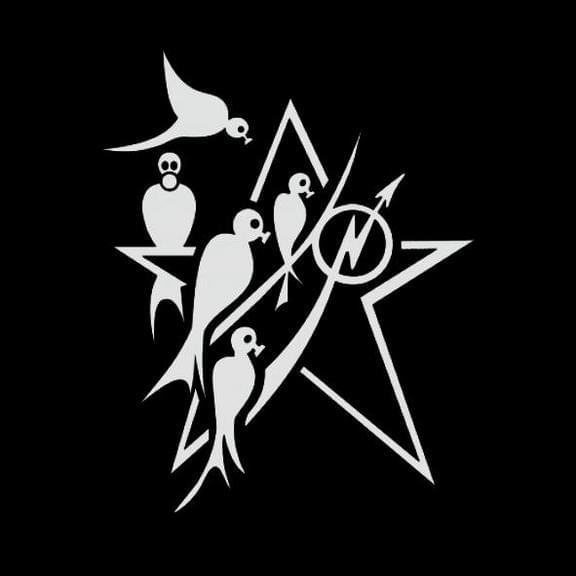
The Children House and self-education structure of Community of Squatted Prosfygika
E-Mail: [email protected]
1% of €3000
€30 reached in total
-1052 days left